Exploring the Unique Visual Engagement of Children with Autism
Children with autism spectrum disorder (ASD) exhibit distinctive patterns of eye-blinking compared to typically developing children. These differences in blinking behavior reveal much about how children with autism perceive and engage with their environment. Recent research focusing on eye-blink inhibition offers valuable insights that can enrich behavioral therapies and improve intervention strategies.
Eye-Blink Inhibition as a Window into Autism Engagement
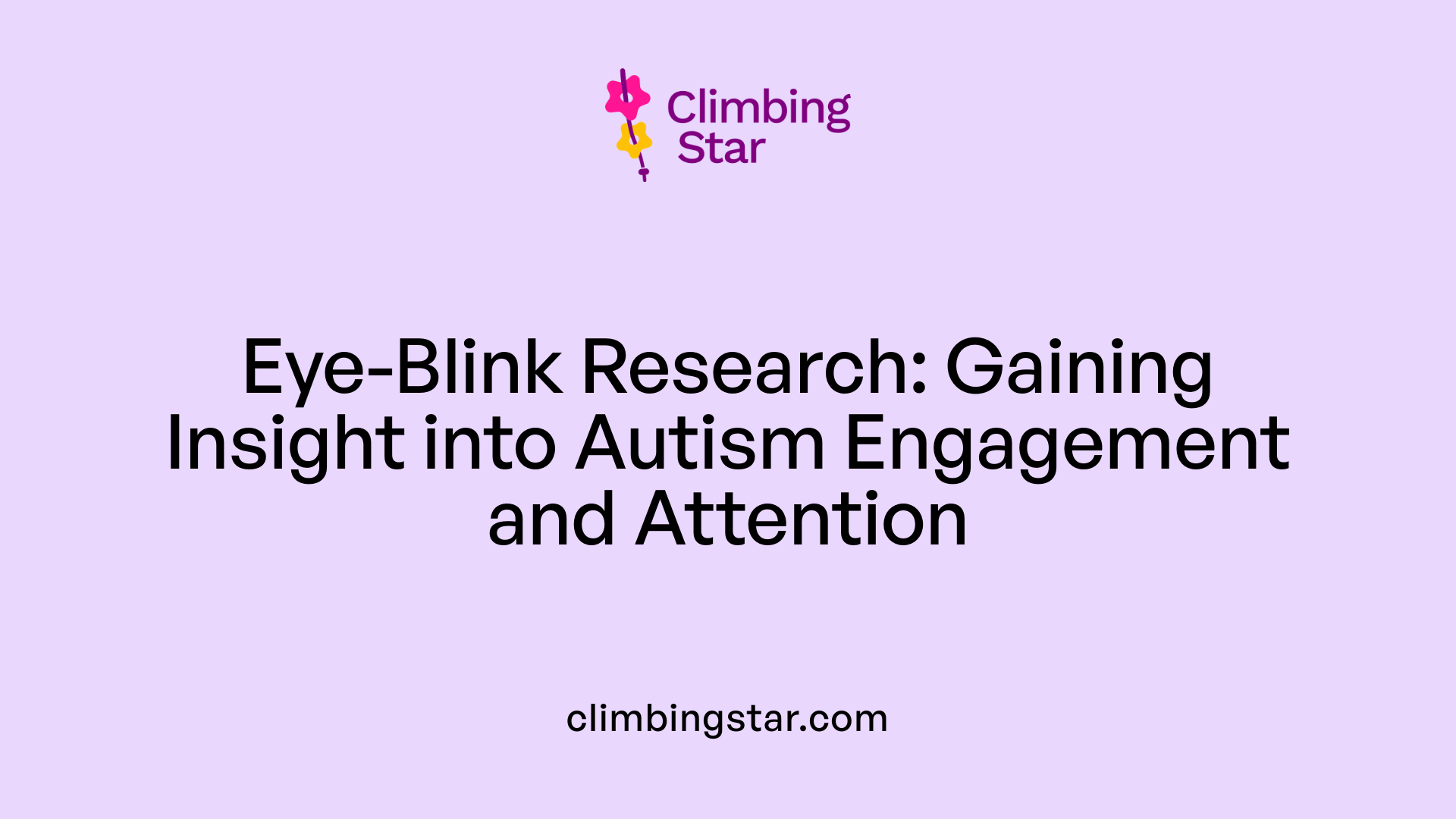
What Did the Eye-Blink Measurement Study Reveal?
A recent collaborative study by Marcus Autism Center at Emory University and Yale University tracked eye-blink inhibition in 93 two-year-old children, including those with Autism Spectrum Disorder (ASD) and typically developing toddlers. This study used blink timing as an indirect measure of what children find engaging and important visually.
How Do Blink Patterns Differ Between Children With Autism and Typically Developing Children?
Typically developing toddlers tend to inhibit their blinking during emotionally charged scenes and facial expressions. This early blink inhibition shows that they anticipate social cues and prioritize social information.
Conversely, toddlers with autism inhibit blinking primarily when observing physical objects and motion. Their blink inhibition occurs reactively, after physical actions take place, rather than anticipating social signals. This pattern indicates a different focus in visual engagement compared to neurotypical peers.
Why Is Visual Information Processing Important?
Eye-blink inhibition is linked to how the brain perceives stimulus salience — basically, what the child regards as important or engaging. In typically developing children, early blink inhibition around social stimuli reflects an ingrained attention to social interaction cues.
In children with autism, the reactive blink inhibition to physical motion suggests their attention is drawn more to physical rather than social aspects of their environment. This insight is valuable as it reveals underlying perceptual focus differences that can influence learning and social development.
These findings not only deepen understanding of autism-related attention differences but also offer a novel method for objectively measuring engagement. This can inform and tailor behavioral therapies and interventions to foster social attention in children with ASD.
Significance of Blink Timing and Perceived Stimulus Salience
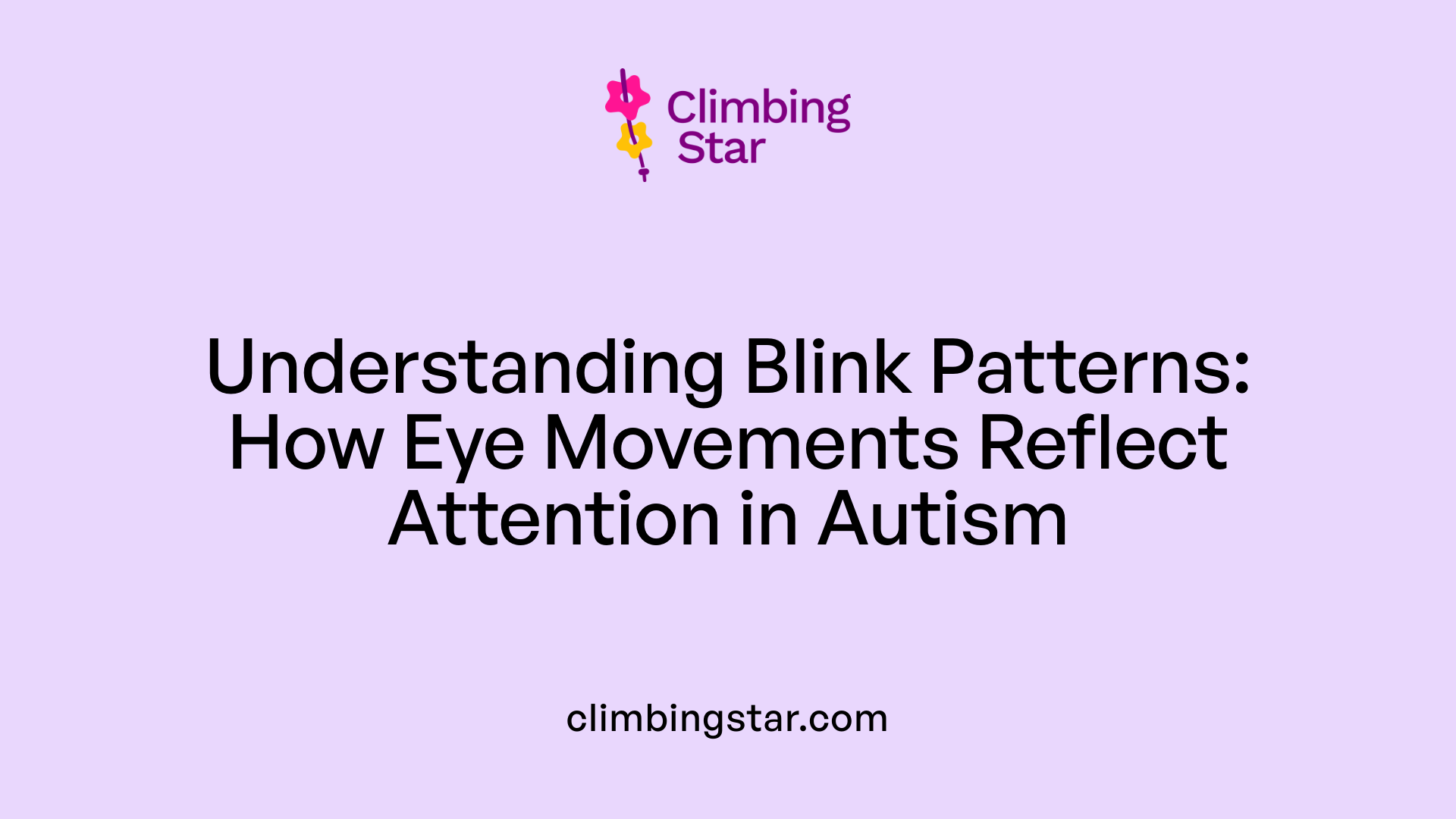
What does the timing of eye-blink inhibition reveal about what children with autism focus on?
Eye-blink inhibition is closely linked to how children perceive the importance, or salience, of visual stimuli. In typically developing toddlers, blinking is suppressed during emotionally significant scenes and facial expressions. This early blink inhibition reflects their anticipation of social cues, helping them avoid missing critical social information.
In contrast, toddlers with autism show blink inhibition primarily when watching physical objects or motion, and this inhibition happens after the event occurs rather than beforehand. This suggests that children with autism are more engaged by physical actions and movement than by social or emotional cues.
How does blink inhibition timing relate to subjective perception of stimulus salience?
The timing of blinking acts as an indicator of how salient a stimulus is subjectively perceived by the child. When blinking is inhibited early, it shows that the child expects important information (often social/emotional) and is actively engaged in processing it. When blink inhibition is reactive and delayed, it indicates a focus on action-oriented or physical stimuli, potentially missing social nuances.
What are the visual engagement differences between children with and without autism?
- Typically Developing Toddlers: Early blink inhibition during social interactions and emotional expressions signifies proactive engagement with social cues.
- Toddlers with Autism: Later blink inhibition tied to physical movements highlights a different pattern of visual attention, emphasizing objects and motion rather than social information.
These findings provide a measurable way to assess engagement differences in young children and offer insights crucial for tailoring interventions to improve social attention in children with autism.
Autism Spectrum Disorder: A Broad Overview
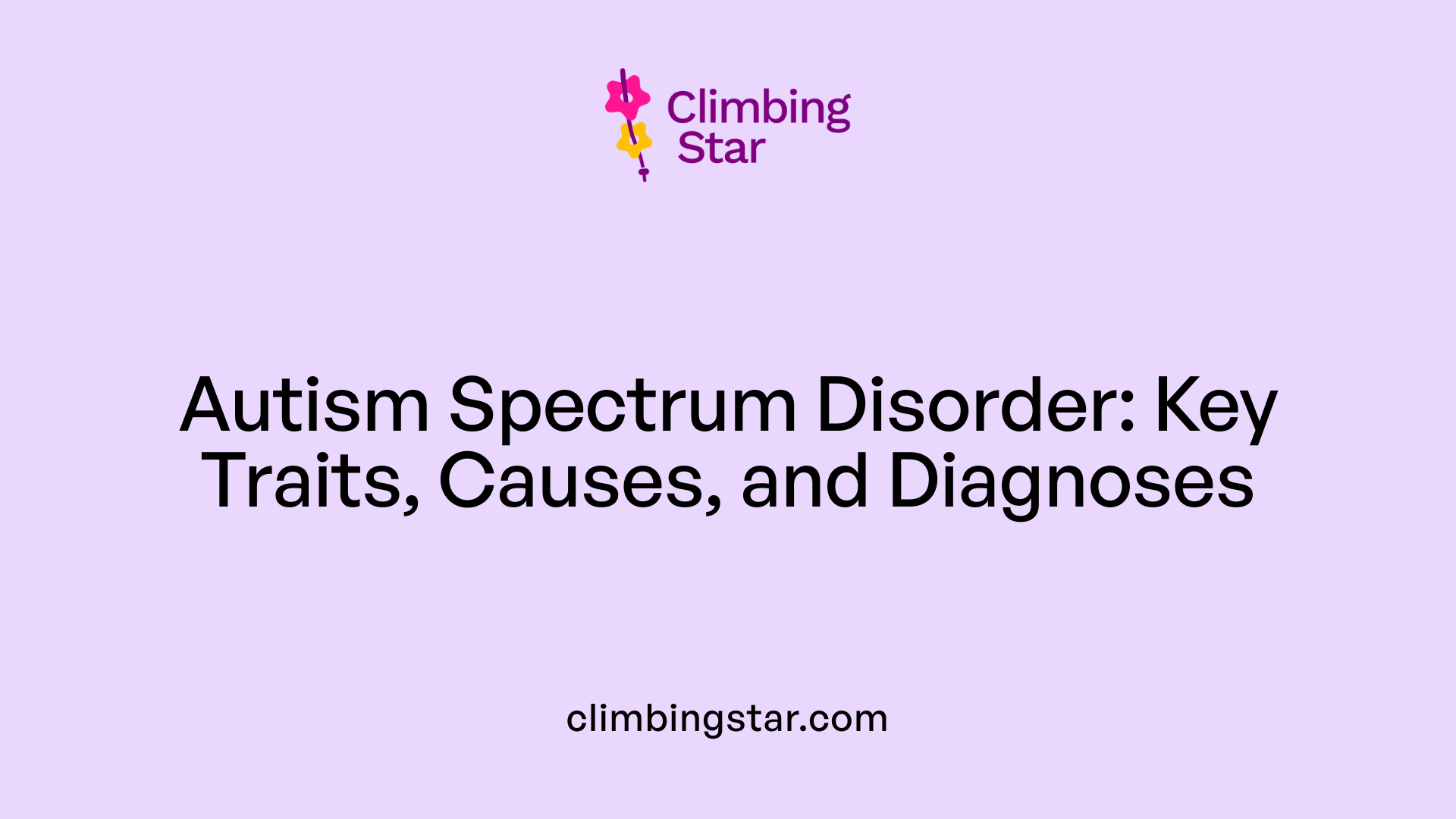
What are the primary characteristics and causes of autism spectrum disorder?
Autism Spectrum Disorder (ASD) is a developmental condition that primarily affects communication, social interactions, and behavior. Children with ASD often experience delays in language development and difficulties engaging socially. Behaviors can include repetitive actions, fixations on particular interests, and varied sensory responses.
The causes of ASD are complex and multifaceted. Genetic factors are a significant contributor, including abnormalities in chromosomes or mutations in specific genes such as those linked to Fragile X syndrome and Rett syndrome. Environmental influences also play a role, with risks associated with maternal drug use during pregnancy and exposure to chemicals like pesticides and heavy metals.
How is autism spectrum disorder diagnosed and classified?
Diagnosis of ASD relies on careful behavioral observation and response testing. Additional assessments, like audiology tests, are used to rule out other potential causes of developmental delays. Early diagnosis is crucial as it improves developmental outcomes through timely intervention. The American Academy of Pediatrics recommends standardized developmental screening at 9, 18, and 30 months.
ASD severity is categorized into three levels based on symptom severity and support requirements:
- Level 1: Requires support
- Level 2: Requires substantial support
- Level 3: Requires very substantial support
What symptoms do children with autism spectrum disorder exhibit?
Symptoms of autism spectrum disorder are diverse and can range from mild to severe. Common manifestations include impairments in communication and social interaction, repetitive behaviors such as hand flapping or stimming, sensory sensitivities, and intense special interests. These symptoms impact daily functioning and vary widely between individuals.
Understanding Stimming Behaviors Including Excessive Blinking
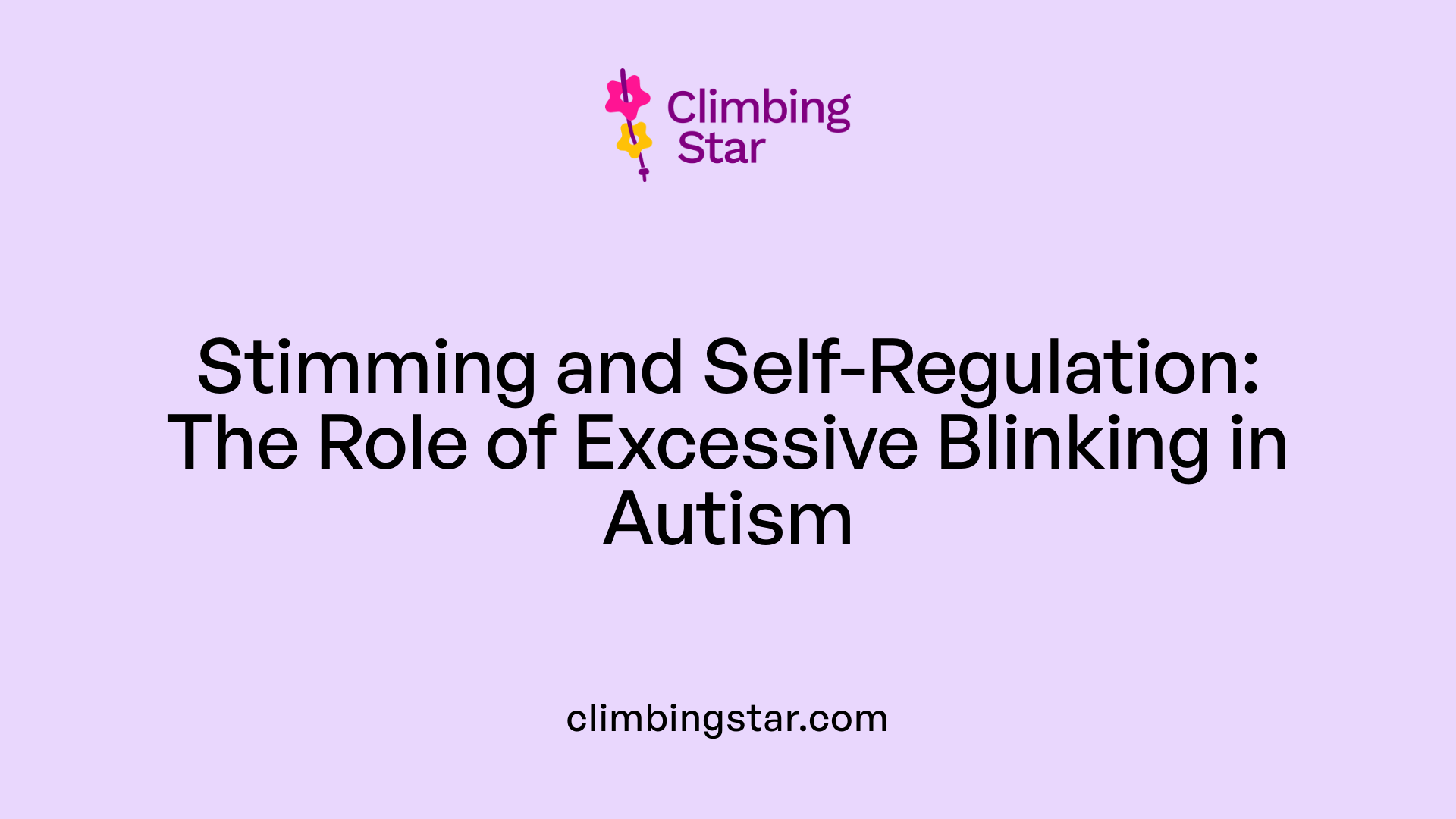
What is stimming and how is blinking related to it in children with autism?
Stimming, short for self-stimulatory behavior, involves repetitive movements, sounds, or actions that children with autism often use to manage their sensory experiences. These behaviors can help them cope with sensory overload, soothe feelings of anxiety, or express excitement. Rather than just random actions, stimming serves important emotional and regulatory roles for the child.
Common stimming behaviors
Typical stimming actions include arm or hand flapping, repetitive noises, head banging, or rocking. Visual stimming can involve looking sideways at objects or repetitive blinking. These behaviors vary widely among individuals and can be subtle or very noticeable.
Role of blinking as stimming
Blinking can be more than just a natural reflex; for some children with autism, excessive or patterned blinking acts as a stimming behavior. It helps them regulate sensory input or emotional states. Research shows differences in how children with autism blink compared to typically developing children, reflecting variations in engagement and focus.
Overall, understanding blinking as a form of stimming is important. Parents and caregivers are encouraged to observe the motivation behind a child’s stimming behaviors rather than trying to stop them outright. Adjusting sensory environments and engaging the child thoughtfully can support better regulation and comfort.
Applied Behavior Analysis (ABA) Therapy: Core Concepts and Uses
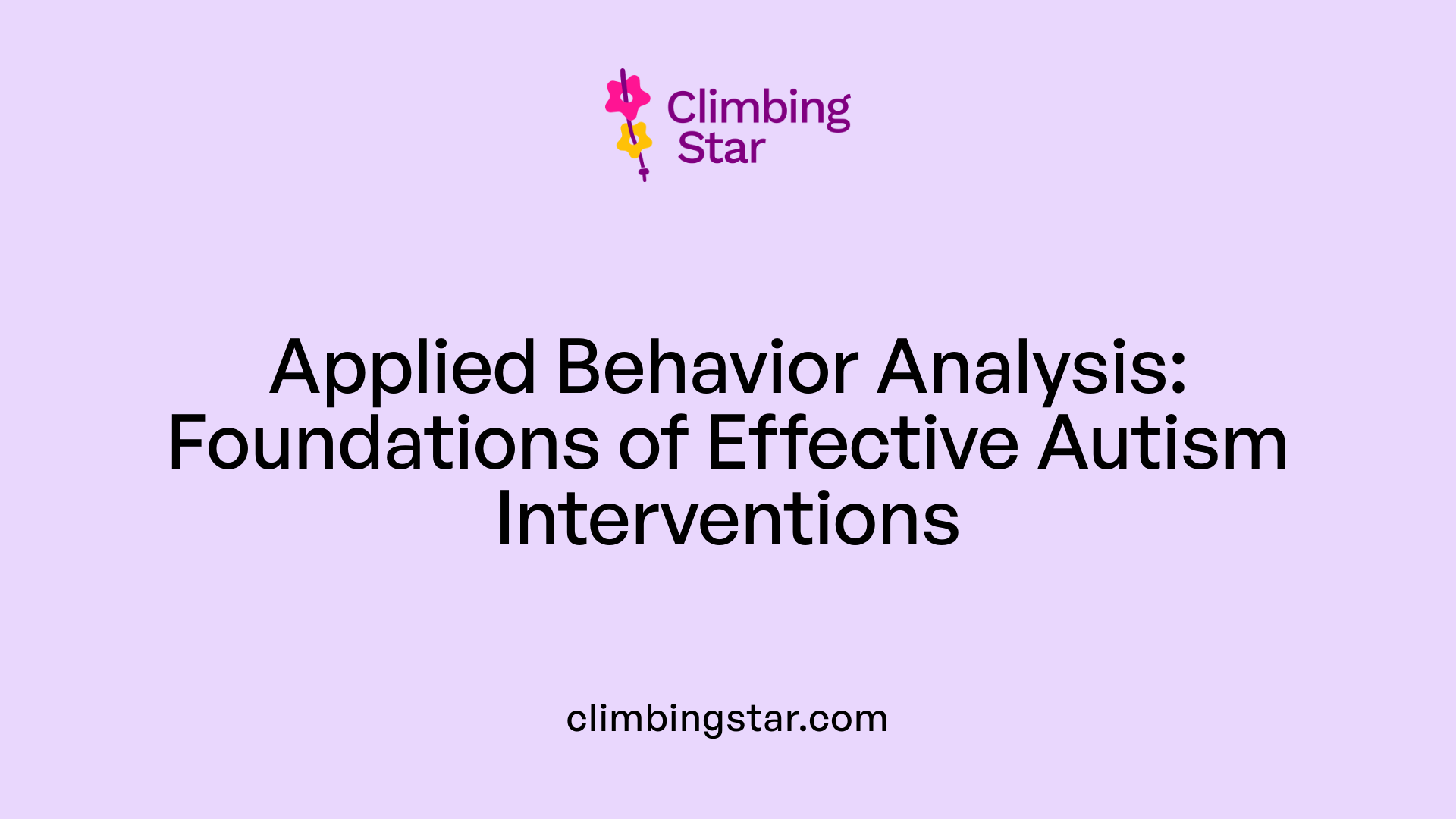
What is Applied Behavior Analysis therapy and how is it used for autism?
Applied Behavior Analysis (ABA) therapy is a science-based treatment that helps individuals with autism develop important skills by applying learning principles like positive reinforcement. The main goal of ABA is to increase helpful behaviors—such as language, social interactions, and daily living skills—while reducing behaviors that could be harmful or interfere with learning.
Therapeutic techniques used
ABA utilizes structured methods including Discrete Trial Training (DTT), which breaks skills into small, simple tasks that are taught one at a time. Additionally, naturalistic interventions like Pivotal Response Treatment (PRT) focus on improving motivation and communication through play-based activities. Therapists give clear instructions, prompt correct responses, and reward successful behaviors to encourage progress.
Settings and professionals involved
ABA therapy is typically delivered by trained therapists in one-on-one sessions, often occurring in the child's home, school, or community settings. This personalized approach ensures that teaching is tailored to the child's unique needs and learning pace.
Benefits of early intensive intervention
Starting ABA therapy early and using intensive, structured sessions can significantly improve a child's language abilities, cognitive function, and social skills. Early intervention supports better long-term developmental outcomes and helps children with autism become more independent. Parental involvement and training are also important components of ABA, enhancing consistency and reinforcement outside of therapy sessions.
Enhancing Engagement Through Eye-Blink Research in Behavioral Therapy
How can eye-blink measurement improve behavioral therapies for children with autism?
Eye-blink measurement reveals important clues about what draws the attention of children with autism. Research shows that toddlers with Autism Spectrum Disorders (ASD) inhibit blinking notably when observing physical objects and motion, unlike typically developing children who do so during social and emotional cues. This difference in blink timing reflects distinct ways of processing visual information.
Application of eye-blink research in therapy
By tracking eye-blink inhibition, therapists obtain an objective measure of a child's engagement and perception. This allows them to understand which stimuli a child finds salient or interesting. Therapies like Applied Behavior Analysis (ABA) and Pivotal Response Treatment (PRT) can then be better customized to focus on these stimuli, increasing the child’s motivation and improving learning outcomes.
Measurement of engagement in ASD
Eye-blink timing serves as a non-invasive and quantifiable method to assess attention in young children with ASD. Unlike traditional behavioral observations, this technique provides immediate feedback on how children respond internally to both social and non-social stimuli. Therapists can use this data to fine-tune session activities and create more engaging learning environments.
Impact on therapeutic strategies
Incorporating eye-blink measurement insights helps prioritize early intervention approaches that emphasize a child's unique focus. For example, knowing a child is more responsive to physical motion can guide therapists to integrate movement-based activities that align with the child's natural interests. This personalized approach can accelerate skill acquisition and promote more effective social and communication development.
Understanding eye-blink patterns bridges the gap between biological responses and behavioral therapy, offering a promising tool to enhance engagement and outcomes for children with autism.
Comprehensive Autism Treatments Beyond Eye-Blink Insights
What treatments are available for autism spectrum disorder aside from behavioral therapies?
Treatment of Autism Spectrum Disorder (ASD) goes beyond just behavioral therapies to include a comprehensive, holistic approach tailored to the child's individual needs. Speech therapy plays a crucial role in helping children develop better communication skills, addressing language delays and improving social interaction.
Occupational therapy focuses on improving daily living skills and sensory integration, helping children manage sensory sensitivities common in ASD. Educational therapies use structured, specialized classroom environments and curricula designed to support learning at the child's pace.
Family involvement is also an essential part of treatment. Parent training programs equip caregivers with strategies to support social and emotional development and to manage challenging behaviors effectively. These interventions ensure continuity and reinforcement of skills learned in therapy.
Medication may be prescribed to manage specific symptoms such as anxiety, hyperactivity, or seizures commonly associated with ASD. However, medications do not treat the core symptoms but serve to ease related conditions that can impact learning and quality of life.
Behavioral therapies, especially Applied Behavioral Analysis (ABA), remain a fundamental component. ABA uses reinforcement and structured teaching methods to promote communication, social skills, and independence. Other evidence-based therapies like the Early Start Denver Model and Pivotal Response Treatment integrate play and motivation to further support developmental progress.
A holistic, multidisciplinary approach that combines behavioral therapies with speech, occupational therapies, medication when appropriate, and strong family participation offers the most effective framework for supporting children with ASD throughout their development.
Role of Parents and Caregivers in Autism Intervention
Why is family participation vital in autism therapies?
Family involvement in autism therapies is crucial because parents and caregivers play a central role in reinforcing therapeutic strategies beyond clinical settings. When families are trained to apply techniques from therapies such as Applied Behavior Analysis (ABA), they help ensure consistent support for the child throughout everyday activities.
Importance of family involvement
Engaged family members can observe behaviors in natural environments and provide immediate, personalized interventions. This continuous reinforcement strengthens communication, social skills, and behavioral improvements initiated during professional therapy sessions.
Parent training in therapies
Parent training programs equip caregivers with essential tools to understand their child's unique needs and apply evidence-based techniques effectively. For instance, training in ABA focuses on delivering clear instructions, prompting responses, and rewarding positive behaviors to promote independence.
Supporting communication and social skills
Families encouraged to participate can better support their children's development by fostering communication and social interactions during daily routines and playtime. This involvement creates opportunities for practicing new skills and reduces behavioral challenges.
Overall, active family participation amplifies the benefits of autism therapies, contributing to improved developmental outcomes and helping children with autism navigate social and communication complexities more successfully.
Impact of ASD Comorbidities on Therapy and Management
What comorbid conditions commonly occur with autism, and how do they affect management?
Children with autism spectrum disorder (ASD) frequently experience a range of comorbid conditions that add complexity to their care. Some of the most common comorbidities include sleep disorders, seizures, attention-deficit/hyperactivity disorder (ADHD), anxiety, depression, behavioral problems, and intellectual disabilities.
These additional medical and psychological challenges require careful consideration during diagnosis and ongoing treatment. For example, sleep disorders can affect energy levels and mood, influencing a child's responsiveness to therapy. Seizures may necessitate neurological management and medication adjustments, while ADHD symptoms can impact attention and learning during behavioral interventions.
The presence of anxiety or depression also requires integrated mental health support alongside core ASD therapies. Intellectual disabilities often mean that therapy goals and strategies must be tailored to each child's cognitive abilities to maximize effectiveness.
Because these comorbidities influence both the child's behavior and their ability to benefit from interventions, treatment plans need to be flexible and multidisciplinary. Healthcare providers typically collaborate across specialties—including neurology, psychiatry, psychology, and occupational therapy—to address all aspects of the child's health.
In practice, this means that therapies like Applied Behavioral Analysis (ABA) or social skills training are adapted to accommodate these conditions. For instance, a child with ADHD might benefit from shorter, highly structured therapy sessions, while those with anxiety may need gradual exposure methods or calming techniques integrated into the approach.
Overall, managing comorbidities alongside ASD is crucial to improving therapy outcomes and supporting the child's overall development and well-being.
Early Diagnosis and Lifelong Support for Children with Autism
Why is early diagnosis important in autism and how does it shape lifelong support?
Early diagnosis of autism is crucial because it enables children to receive timely interventions that greatly enhance their developmental outcomes. Standardized developmental screenings are recommended at 9, 18, and 30 months, during which behavioral observations and response tests help identify signs of autism. Early recognition allows families and professionals to initiate evidence-based therapies such as Applied Behavioral Analysis (ABA), which teaches communication, social, and play skills effectively when started young.
Diagnostic practices include behavioral observation and response assessments, sometimes supplemented by audiology and genetic testing to rule out other conditions or identify genetic factors influencing the child's autism and related medical issues. These diagnostic steps ensure tailored intervention plans to suit each child’s needs.
Supporting a child with autism is not a one-time effort but a lifelong journey. As children mature, ongoing evaluation is vital to adjust therapies and address evolving needs, including managing co-occurring medical conditions such as epilepsy or sleep disorders. Planning for adulthood involves fostering independence and social competence, which requires continuous support and skill development.
Families and caregivers play a critical role in this process by participating in interventions and therapies that promote the child's emotional, social, and cognitive growth throughout life. Structured educational programs and family therapies provide stability and improve outcomes by addressing communication, behavior, and daily living skills.
This continuous, adaptive support framework ensures children with autism spectrum disorder can achieve their fullest potential across all stages of life.
Bridging Research and Therapeutic Practice for Better Autism Outcomes
Insights from eye-blink inhibition studies enrich our understanding of how children with autism perceive their world, emphasizing differences in engagement with social versus physical stimuli. Integrating these findings into behavioral therapies like Applied Behavior Analysis enhances personalized treatment plans, improving communication and social skills. Holistic, early intervention involving trained professionals and active family participation remains critical for supporting children with autism throughout their development and into adulthood. Continued research and clinical application of such unique markers of engagement promise even greater therapeutic advances in the future.
References
- Inhibition of Eye Blinking Reveals How Toddlers with ASD ...
- Autism spectrum disorder (ASD): Causes, Symptoms and ...
- What is Stimming and How Can I Help My Child?
- Behavioral Therapy for Autism Spectrum Disorder in Children
- Autism spectrum disorder - Diagnosis and treatment
- Autism Spectrum Disorder (ASD)
- Applied Behavior Analysis (ABA)
- Applied Behavior Analysis (ABA)
- The Controversy Around ABA







